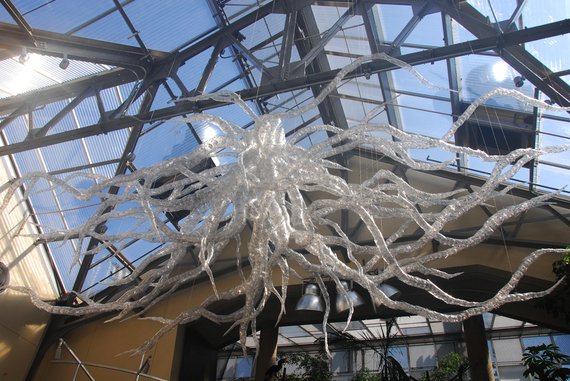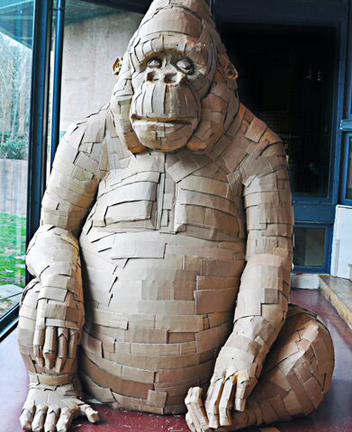Summer break looms just weeks away and many parents are wondering about vacation ideas for the kids. What better way to share time as a family than to pick activities that are not only fun, but that also reinforce the importance of an appreciation for all things that are part of our ecosystem and our national natural resources?
Predictions put forth in a recent study by ecologist Mark Urban maintain that the trajectory of climate change risks the extinction of one in six plants and animal species -- with some scientists being even more dire in their projections.
Go Local
Secretary of the Interior, Sally Jewell, in tandem with National Park Service Director Jonathan B. Jarvis, recently announced the designation of 10 new state and local trails to the National Trails System. A database of America's system of trails and greenways has been formulated with the goal of promoting the "development and enjoyment of recreation close to home." When I did a search in my area, I found a kayaking trail on the Bronx River, which is the only freshwater river in New York City. The information resonated with the environmental work of the Bronx River Alliance, a hyperlocal organization.
Pick a Park
The National Park Service has a robust website that allows a search by park name or by state. An annual pass gives you entrance to over 2,000 federal recreation sites, an extensive choice of parks, forests and grasslands, and national wildlife refuges. There is no cost for members of the military and their dependents. A great feature is the breakdown of specific interests formulated into the "Our Shared Heritage" itineraries, with themes including: American Latino Heritage, Places Where Women Made History, Asian American and Pacific Islander Heritage, and We Shall Overcome: Historic Places of the Civil Rights Movement.
If you are headed out west, make sure to see the Grand Canyon, a jewel in the crown of our park system. In 1908, Teddy Roosevelt made the Grand Canyon a national monument...and he would be mighty distressed to know of the current attacks on its integrity. Roger Clark, Program Director of the Grand Canyon Trust, told me, "Grand Canyon's great paradox is the public perception that it's fully protected as one of America's most treasured national parks, when in fact it is evermore under assault by outside development threats to its air, water, and cultural heritage." He emphasized, "It's all of our responsibility to keep the canyon grand." Ted Zukoski, staff attorney at Earthjustice, has been working on the pushback against commercialization efforts. He informed me via phone, "The Grand Canyon is under siege from uranium mining and from a giant commercial and resort development plan on the doorstop to the canyon's south ramp."
Explore a City Garden
Another great option to beat the heat of July and August is a visit to local gardens and arboretums, many within large cities. New York, Washington, D.C., Chicago, St. Louis, Dallas, Atlanta, San Francisco, and Richmond are well-known for their botanical offerings.
Experience Art
The worlds of art and environmental activism have been coming together with regularity, and a top example is the innovative show "Second Nature: Junk Rethunk" at the Philadelphia Zoo. Twelve international artists have been tapped to create installations from "recycled, reduced, reused, repurposed and renewable materials," with the end goal of bringing home the precarious situation facing endangered animals as a result of human habits that lead to waste and over consumption. Materials used include "obsolete" electronics, cardboard boxes, plastic bottles, and even chewing gum. The artists take on the issues of climate change, deforestation and global pollution refuse.
I had several favorites. Aurora Robson used over 3,000 plastic bottles that she rescued from the garbage to construct her work, Root System Access. Six months in the making, if those bottles hadn't become part of her sculpture, they would have taken 1,000 years to decompose.
The Philadelphia Zoo is promoting 2015 as the Year of the Gorilla, in a campaign to bring visibility to the effect of deforestation (for palm oil and paper pulp) on the habitats of gorillas in the wild. Blue Gorilla by Don Kennell and Gorille En Carton by Laurence Valliéres bring this concern to the forefront. Valliéres work was developed on-site over a fourteen-day period.
To wrap up the summer, check out Invisible River 2015 at the end of August, taking place on Philadelphia's Schuylkill River, also known as "the Revolutionary River." The Schuylkill River Heritage Area lays claim to naturalists who preceded the formal environmental movement, like John Bartram and John James Audubon.
It's ironic, and important to note, that as the Industrial Age began to poison the Schuylkill River, local and state governments purchased acreage along the waterway as a preemptive measure to preclude further pollution from manufacturing -- and to protect the community's drinking water.
It seems some things never change!
Photos: Courtesy of the Philadelphia Zoo
This article originally appeared on the website Moms Clean Airforce


